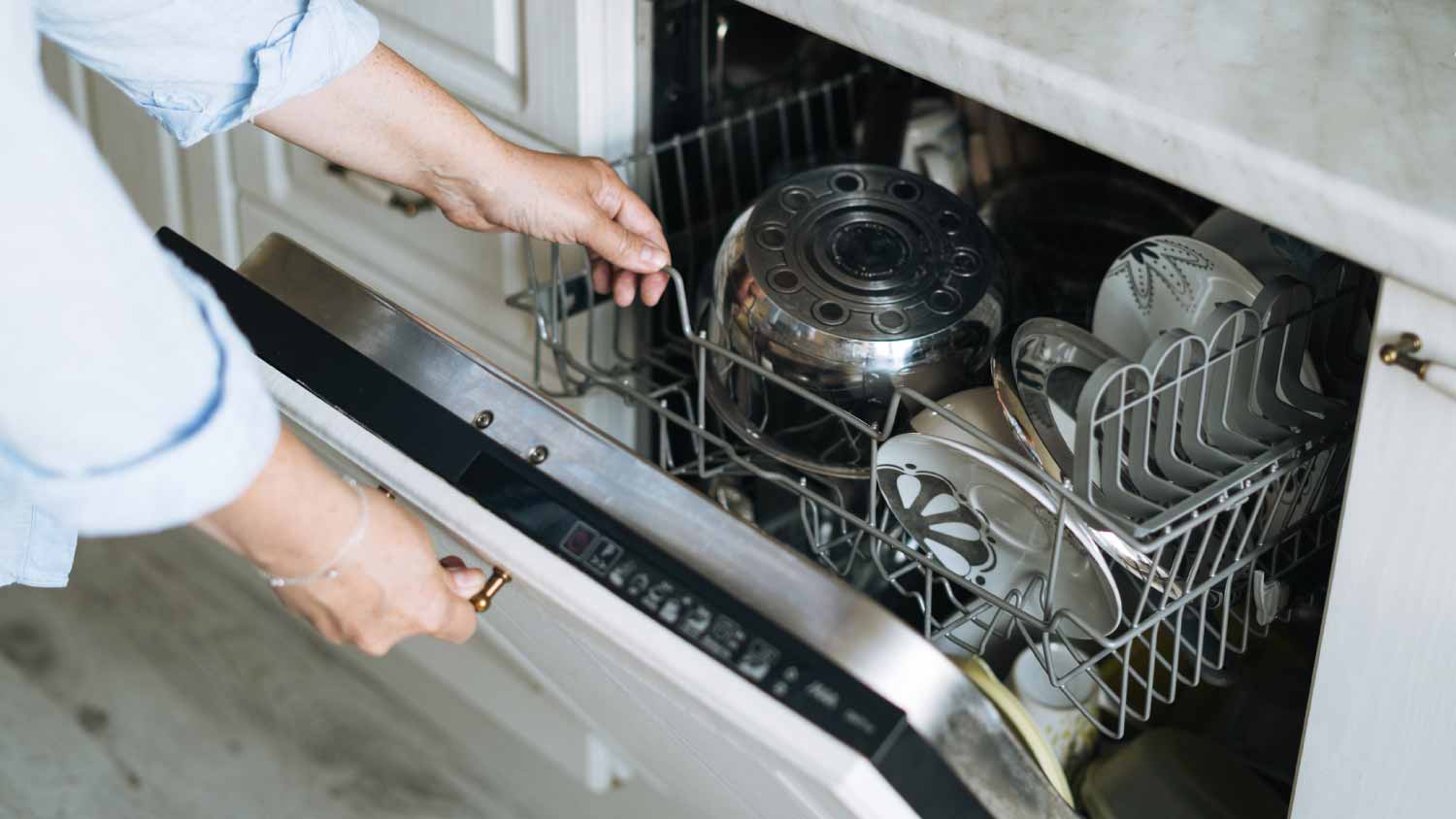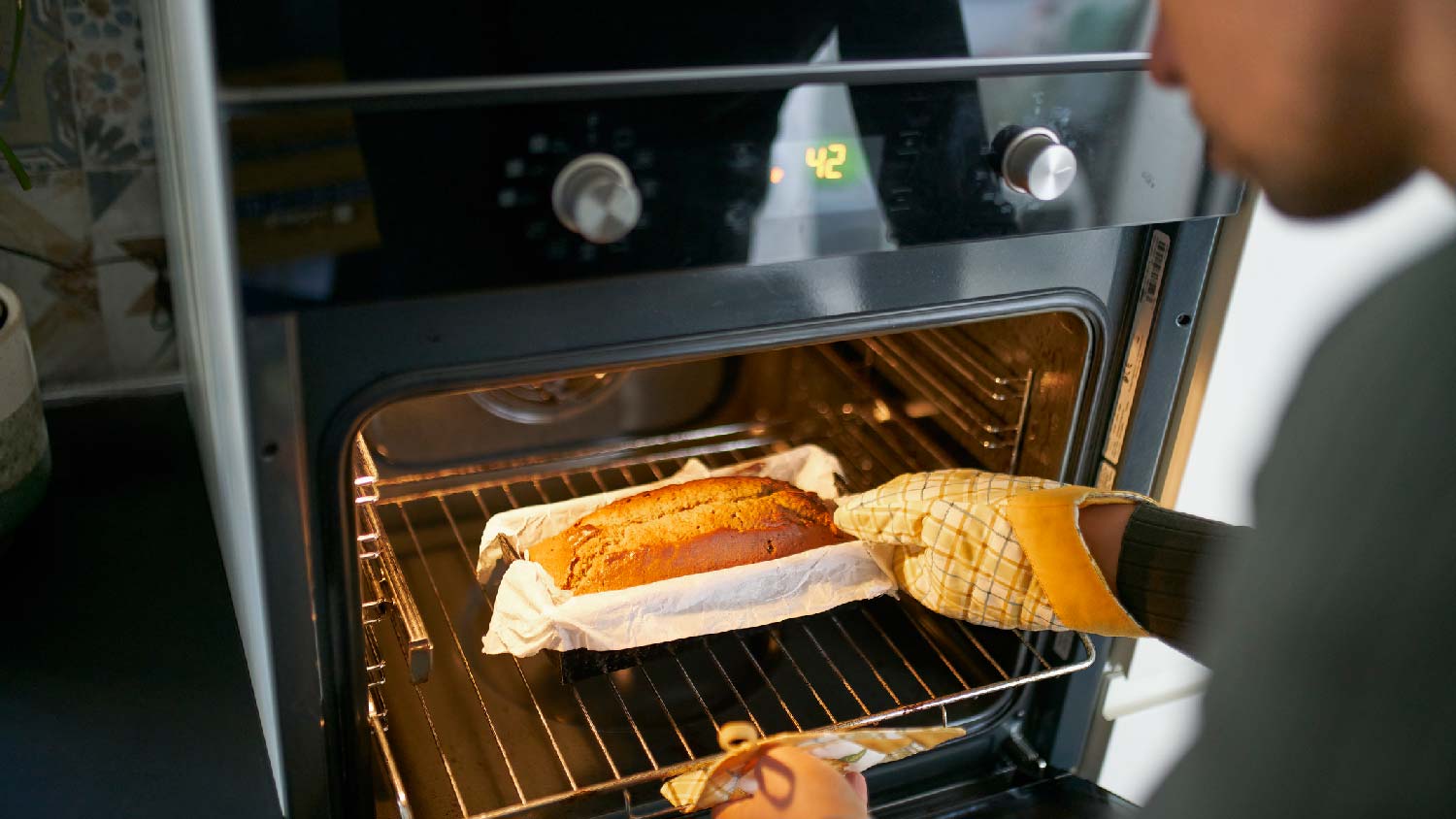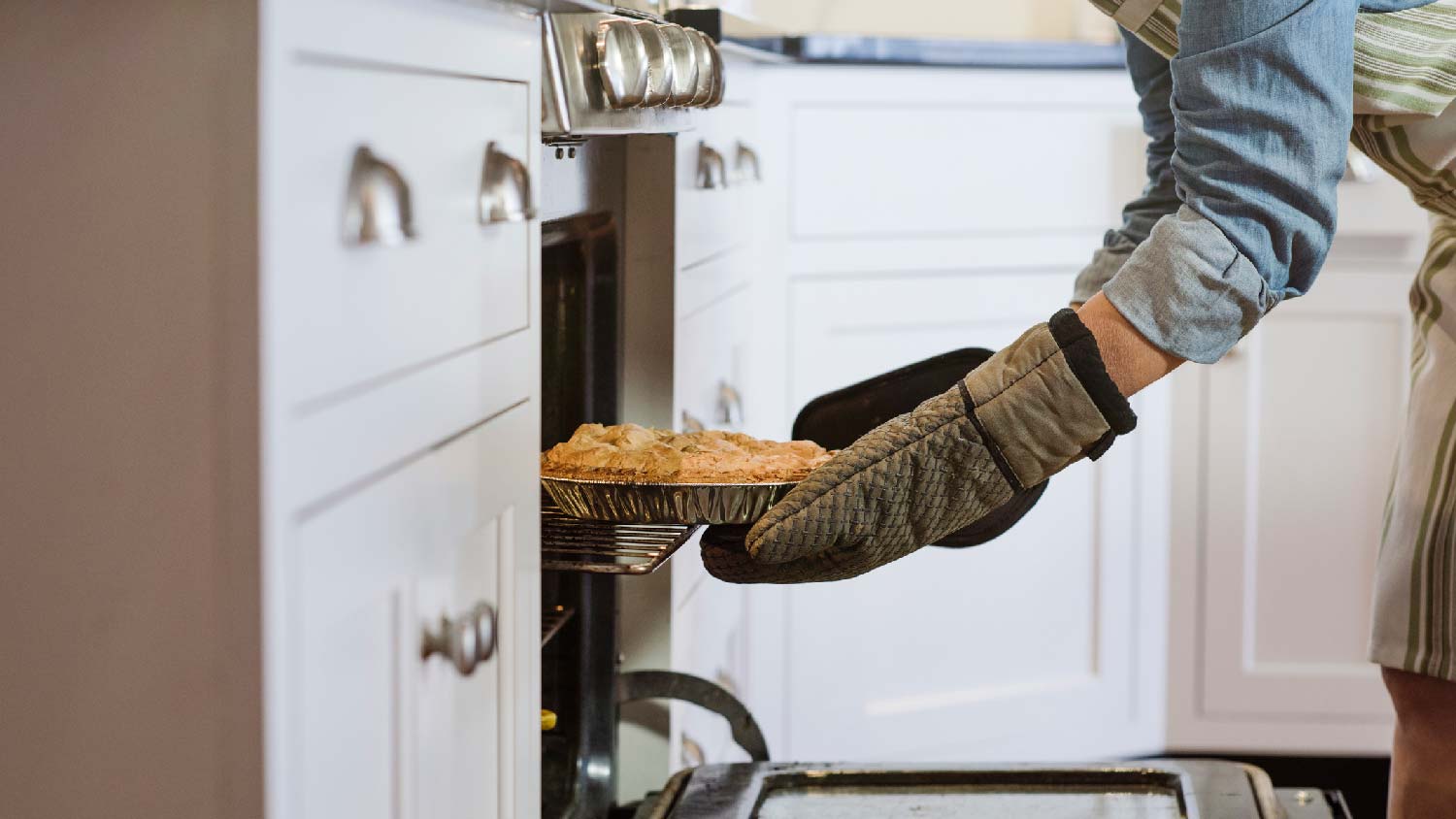White Appliances vs. Stainless Steel Appliances: A Complete Comparison
Show off your design chops when picking your kitchen appliances


White and stainless steel appliances are popular choices.
Use white appliances for a timeless design.
Use stainless steel appliances for a contemporary design.
White appliances are more budget friendly.
Stainless steel appliances are easier to clean quickly.
Your appliances can have a major impact on your kitchen's overall aesthetic and functionality, so it's important to choose the right type for your needs. Stainless steel and white kitchen appliances are both popular options, but each has certain advantages and disadvantages. Below, we outline the key differentiators between both types of appliances so you can make the best choice for your budget, lifestyle, and aesthetic.
Key Differences Between White and Stainless Steel Appliances
When you are choosing white appliances vs. stainless steel appliances, you’re focusing on the exterior design of the product. A white refrigerator has similar cooling features and interior volume to a stainless steel refrigerator. The exterior of the white appliance and the stainless steel appliance both typically consist of sheet metal, but they have different finish colors.
Pros and Cons of White Appliances
It’s tough to go wrong with white appliances, as they deliver a classic design. Whether you want an all-white kitchen or a kitchen with multiple bright colors, white appliances should fit in nicely.
| Pros | Cons |
|---|---|
| Budget friendly | Shows grime clearly |
| Warm and airy design | Variations in shades |
| Hides fingerprints | Staining is possible |
Best for:
Homeowners who have a tight budget for their appliances
Homes with children who leave greasy fingerprints everywhere
Those seeking a timeless design in the kitchen area
Pros of White Appliances
The biggest benefit of white appliances vs. stainless steel is that they do not show fingerprint smudges or scratches as easily as stainless steel.
White appliances tend to cost a little less than stainless steel on average, too. Because white appliances are growing in popularity, you will have more options in available features, sizes, and designs than in previous years.
If you want a feeling of warmth inside the kitchen design, the choice of white appliances vs. stainless steel is preferable. White appliances fit nicely in a light-colored kitchen design or in a kitchen that makes use of bright colors in the backsplash or wall paint. White also fits nicely with stone or wood accents in the design of the kitchen.
Cons of White Appliances
A white appliance is likely to show food spills and grime more readily than stainless steel. As people grab the handles, they may leave grime behind that’s easy to see. Over time, this accumulation of grime can lead to staining that’s very difficult to remove completely.
Some people – not all people – consider the look of white appliances to be dated in a kitchen. It also can be difficult sometimes to find appliances that are the exact same shade of white, especially if you are buying different brand names.
If you have a kitchen with dark cabinets and paint colors, white appliances could create too great of a contrast, while stainless steel may look more natural in this environment.
Pros and Cons of Stainless Steel Appliances
When you want to enhance the contemporary or industrial design and feel in your kitchen, stainless steel appliances are the better choice. They typically do cost a little more vs. white appliances, though.
| Pros | Cons |
|---|---|
| Sharp-looking finish | Shows fingerprints |
| Cleans easily | Higher prices |
| Popular design | You’ll see scratches |
Best for:
Those who want a contemporary look
Households that need easy-to-clean appliances
Those who have dark cabinets and wall colors in the kitchen
Pros of Stainless Steel Appliances
Although stainless steel appliances show smudges and fingerprints more readily than white appliances, they are easier to clean, too. If you wipe them down with a disinfecting spray or wipe, it should take care of most issues you are seeing.
Stainless steel appliances tend to have a greater level of popularity than white appliances. If you’re selling your home, a kitchen with stainless steel appliances may be more appealing to potential buyers. However, design tastes may change over time, so white or another color may be the more popular choice for buyers in the future.
If you have dark-colored cabinets and walls in your kitchen, stainless steel appliances should fit in well.
Cons of Stainless Steel Appliances
Typically, a stainless steel appliance will carry a slightly higher cost than a white appliance. If you want to select black stainless steel instead of silver, you will pay even more, perhaps as much as $150-$300 more than the same model of appliance in white.
Because of the reflective nature of stainless steel, this material will show fingerprints and other smudges that may be almost invisible on a white appliance. The oil from your clean hands can even leave visible residue on the stainless steel finish, meaning you’ll need to wipe them down more often versus white appliances.
Stainless Steel vs. White Appliances: Every Factor Compared
Cost: White
One of the first things many people consider is the cost of new home appliances, and this can vary quite a bit by appliance. Dishwashers, for instance, typically cost $400 to $700, while refrigerators can cost anywhere from $900 to $8,000.
Whether you purchase white or stainless steel can also affect appliance cost. Stainless steel appliances typically cost $150-$300 more than white appliances. However, there are many factors that can influence appliance cost, including brand, features, and finishes.
For instance, since stainless steel can smudge easily, some stainless steel appliances have smudge-resistant finishes, but this feature may cost you $50 to $100 or more extra. Similarly, black stainless steel appliances are better at resisting smudges than their silver counterparts, though they may cost $100-$200 extra for this reason.
That said, some brands offer stainless steel and white appliances at very similar or the same price points. You can also buy used appliances if you're looking for a more budget-friendly option.
The good news is the appliance installation cost for white appliances vs. stainless steel does not differ. You’ll pay an average of $200 for an installation, although some large appliances cost more to install. Check with a local appliance installation service to receive a quote if you need help with installation.
Resistance to Wear and Tear: White
Although stainless steel appliances wipe down easily to remove fingerprints and grime, they tend to show wear and tear more clearly than white appliances. These issues tend to show up in the form of scratches, which often are visible from almost any angle on stainless steel.
Because scratches make the appliances look old and worn well before they should, you may want to learn how to remove scratches from stainless steel. However, this can be a challenging and time consuming process, which is why some people prefer white appliances.
Ease to Clean: Stainless Steel
Kitchens can get messy quickly, especially in a house full of little ones, so knowing which appliance type is easier to clean is crucial.
Residue on appliances from food or liquid spills is a common problem, especially on a stove or refrigerator. With stainless steel appliances, you can simply wipe down the surface with a disinfectant wipe to remove most food or liquid residue.
If you have white appliances, though, some food and liquid stains, especially those with red colors, like spaghetti sauce or wine, may leave a difficult-to-remove stain.
On the other hand, a major benefit of white appliances is that they don't show fingerprint smudges and scratches as easily as stainless steel. However, they may show greasy grime more easily, especially around the handles. Sometimes, white appliances can accumulate stains over time, making it very difficult or impossible to completely restore them to their original appearance.
If smudges, dirt, and scratches are a major concern, you might consider installing black kitchen appliances, which easily hide flaws.
Longevity: Stainless Steel
Stainless steel is an alloy, which makes it highly durable and rust- and water-resistant. Stainless steel appliances often last for years without showing many (or any) signs of wear and tear. For instance, you can expect a stainless steel refrigerator to last about 10 to 15 years. White appliances can potentially last as long as stainless steel, depending on their quality and how well they're maintained.
Regardless of whether you choose white or stainless steel, there are several steps you can take to help your kitchen appliances last longer. Performing regular surface-level cleaning, like wiping down your appliances, can help prolong their appearance. And doing regular deep cleans of your appliances, such as cleaning the condenser coils in refrigerators, can increase their lifespans while ensuring they continue to work as intended.
Popularity: Tie
Just as fashion and decor trends change over time, so do kitchen appliance trends. For a long time, white appliances were the most popular option. However, when stainless steel appliances came on the market in the 1950s, they surged in popularity, with many homeowners replacing their white appliances with stainless steel alternatives.
Fast forward to today and you'll find that white appliances are making a comeback as more homeowners are choosing to incorporate the classic style into all sorts of aesthetics, ranging from modern farmhouse to contemporary. But stainless steel is still a very popular option, particularly in more contemporary kitchens.
The more popular material is always subject to change over time, so what's popular today could become less popular tomorrow. Therefore, your best bet is to choose an appliance material that aligns with your personal aesthetic preferences. Even if it's not the most popular choice right now, it could very well become the go-to choice in future years.





- Appliance Repair Companies
- Washing Machine Repair
- Dryer Repair
- Refrigerator Repair
- Dishwasher Repair
- Oven Repair
- Wood & Pellet Stove Repair
- Freezer Repair Services
- Wood Stove Services
- Gas Stove Repair
- Emergency Appliance Repair Companies
- Ice Maker Repair
- Gas Appliance Repair
- GE Appliance Repair
- GE Refrigerator Repair
- GE Dryer Repair
- GE Dishwasher Repair
- GE Washing Machine Repair
- Samsung Appliance Repair
- Samsung Refrigerator Repair
- Samsung Dryer Repair
- Samsung Washer Repair
- Samsung Dishwasher Repair
- Samsung Oven Repair
- Whirlpool Repair
- Whirlpool Refrigerator Repair
- Whirlpool Washer Repair
- Whirlpool Dryer Repair
- Whirlpool Oven Repair
- Maytag Appliance Repair
- Maytag Refrigerator Repair
- Maytag Washer Repair
- Maytag Dryer Repair
- Maytag Dishwasher Repair
- Kitchenaid Appliance Repair
- Kitchenaid Oven Repair
- Kitchenaid Refrigerator Repair
- Kenmore Appliance Repair
- Kenmore Dishwasher Repair
- Kenmore Washer Repair
- Kenmore Dryer Repair
- LG Refrigerator Repair
- Bosch Appliance Repair
- Kenmore Refrigerator Repair
- LG Appliance Repair Services
- GE Microwave Repair
- Electrolux Appliance Repair
- Electrolux Washer Repair
- Kitchenaid Dishwasher Repair Services
- Wood Stove Inspection
- Dishwasher Installation
- Trash Compactor Repair
- How to Clean Stainless Steel Appliances and Make Them Sparkle
- How To Remove Rust From Stainless Steel: Transform Your Appliances and Cookware
- How to Remove Scratches From Stainless Steel Appliances in Under 25 Minutes
- How to Paint Stainless Steel and Make It Stick
- Black Stainless Steel Sink Pros and Cons: What to Know Before You Buy
- What’s the Difference Between a Composite Sink vs. Stainless Steel Sink?
- Brushed Nickel vs. Stainless Steel Faucets: Which Is Best for You?
- What Are the Best Appliance Colors and Finishes for Your Home?
- Chrome vs. Stainless Steel Faucets: Which Is Better?
- Fireclay vs. Stainless Steel Sinks: Pros, Cons, and Costs










